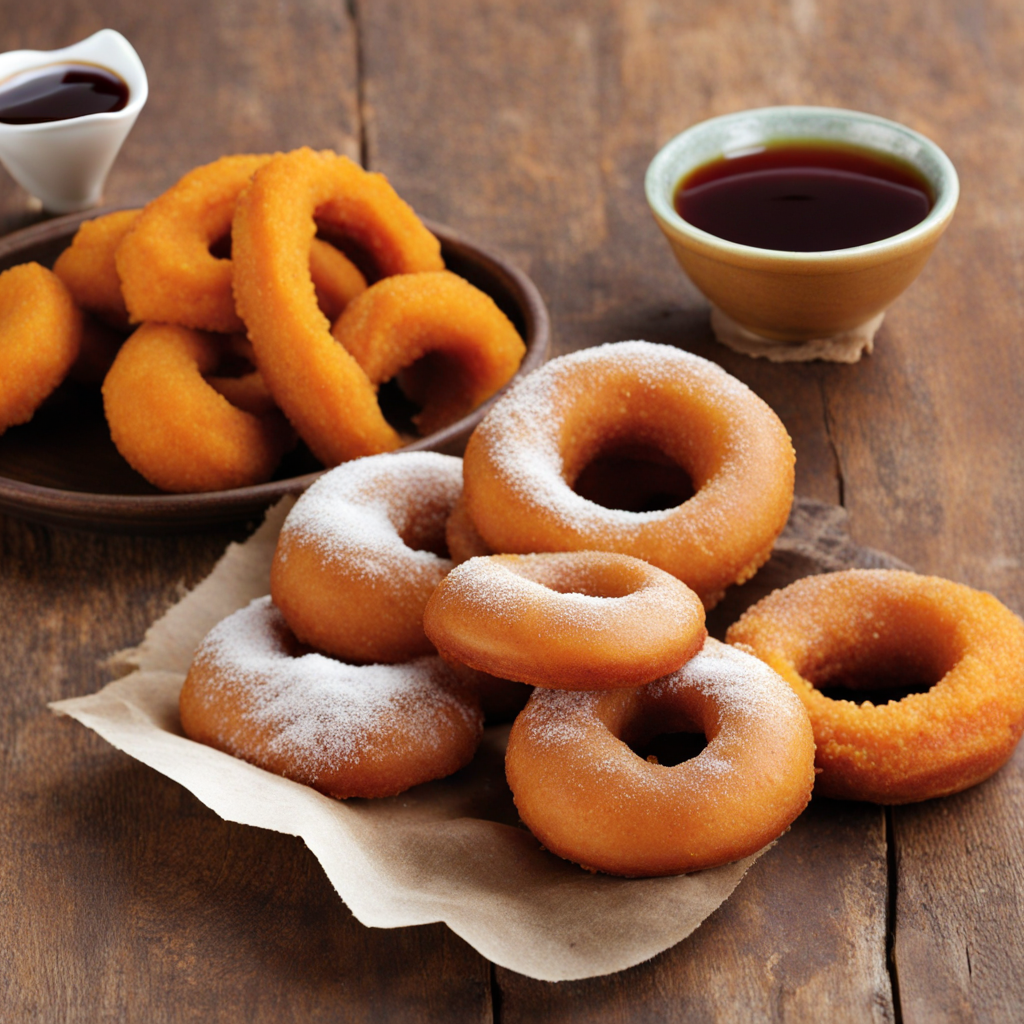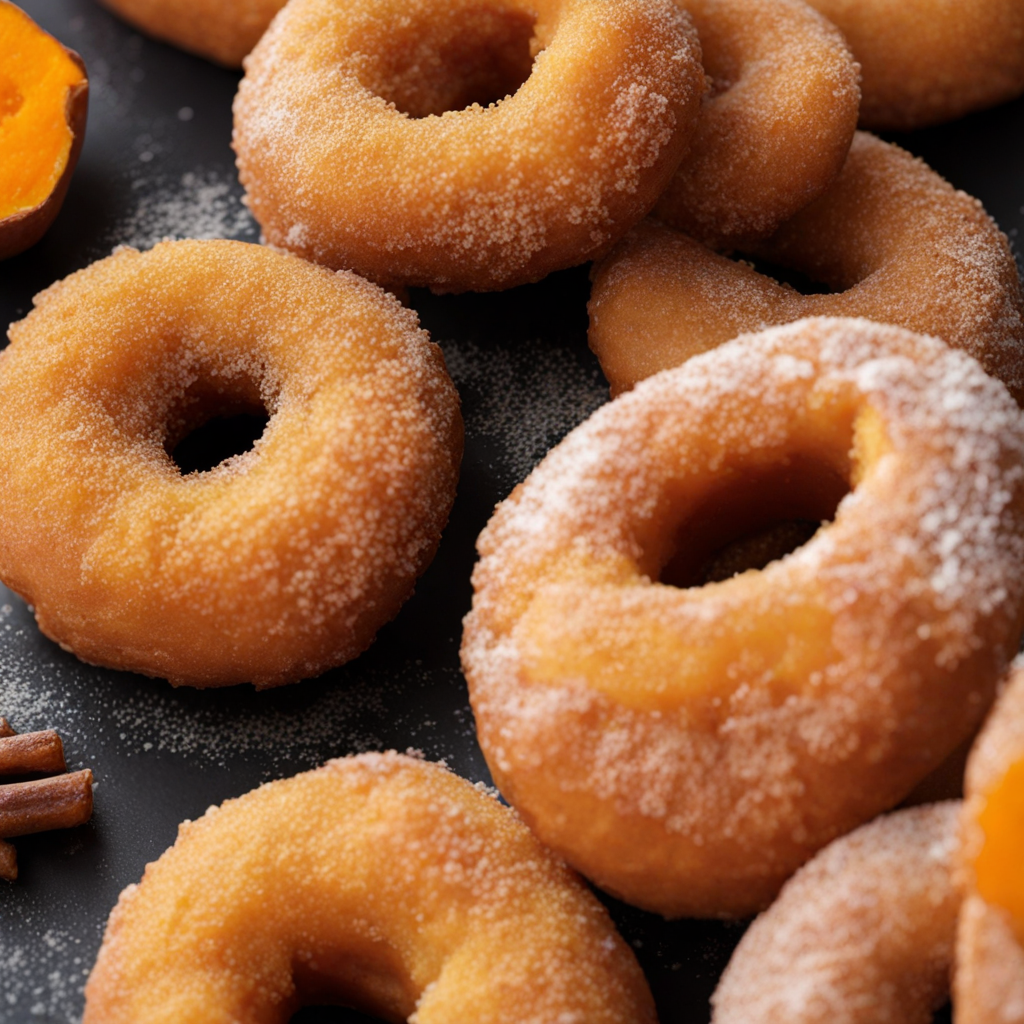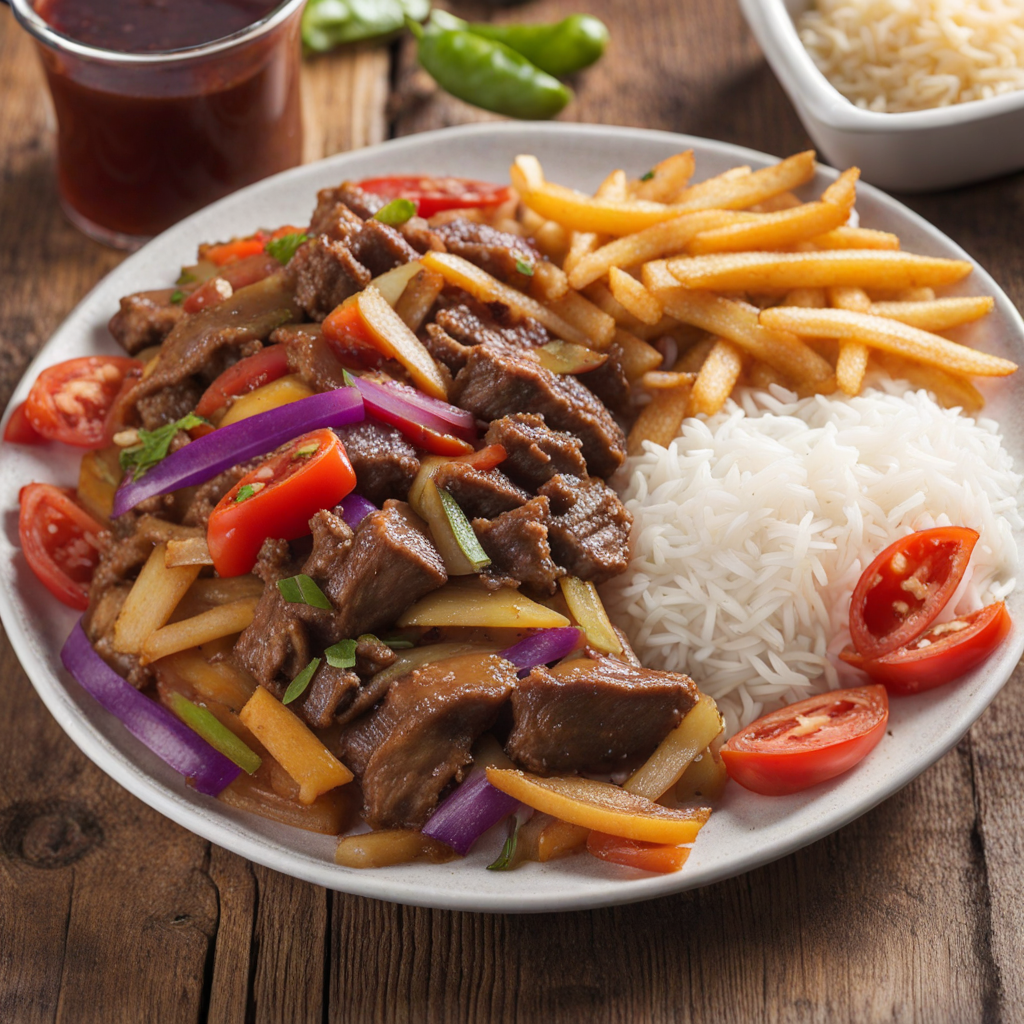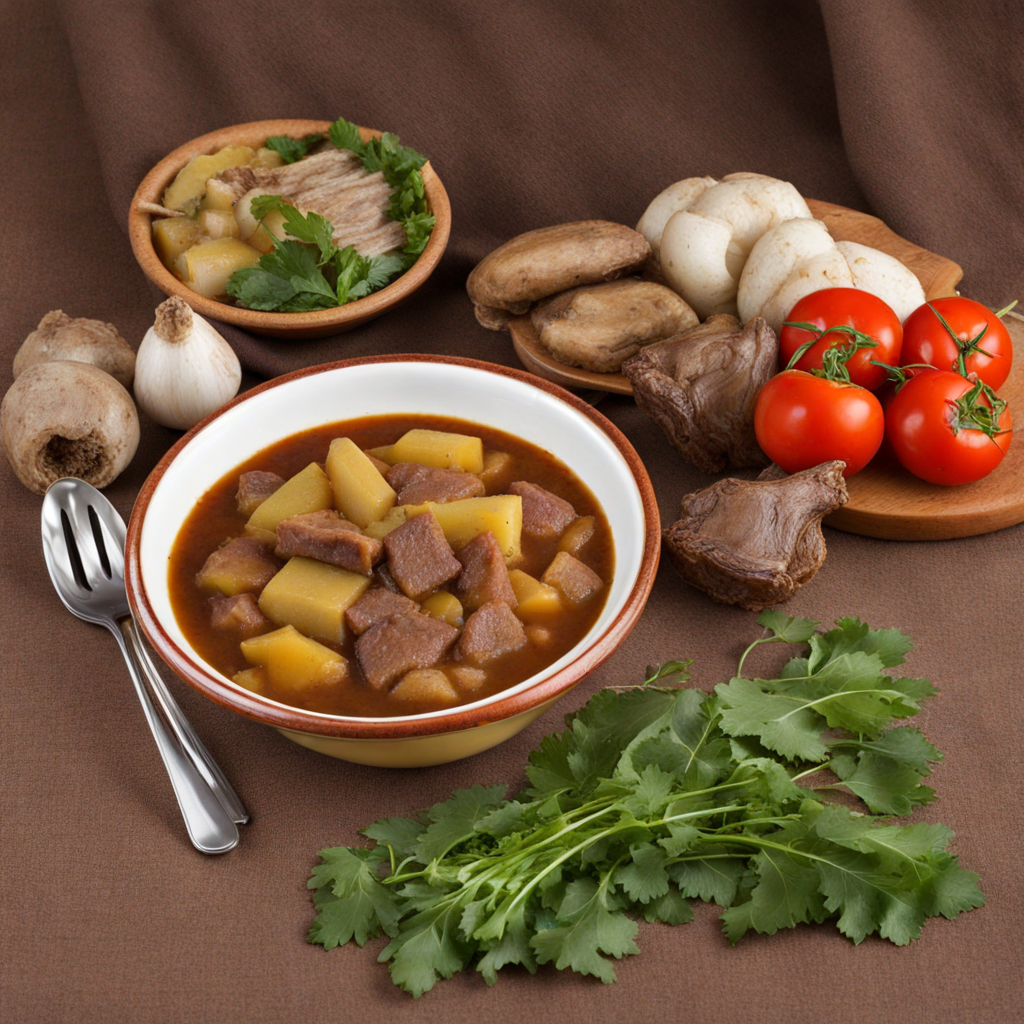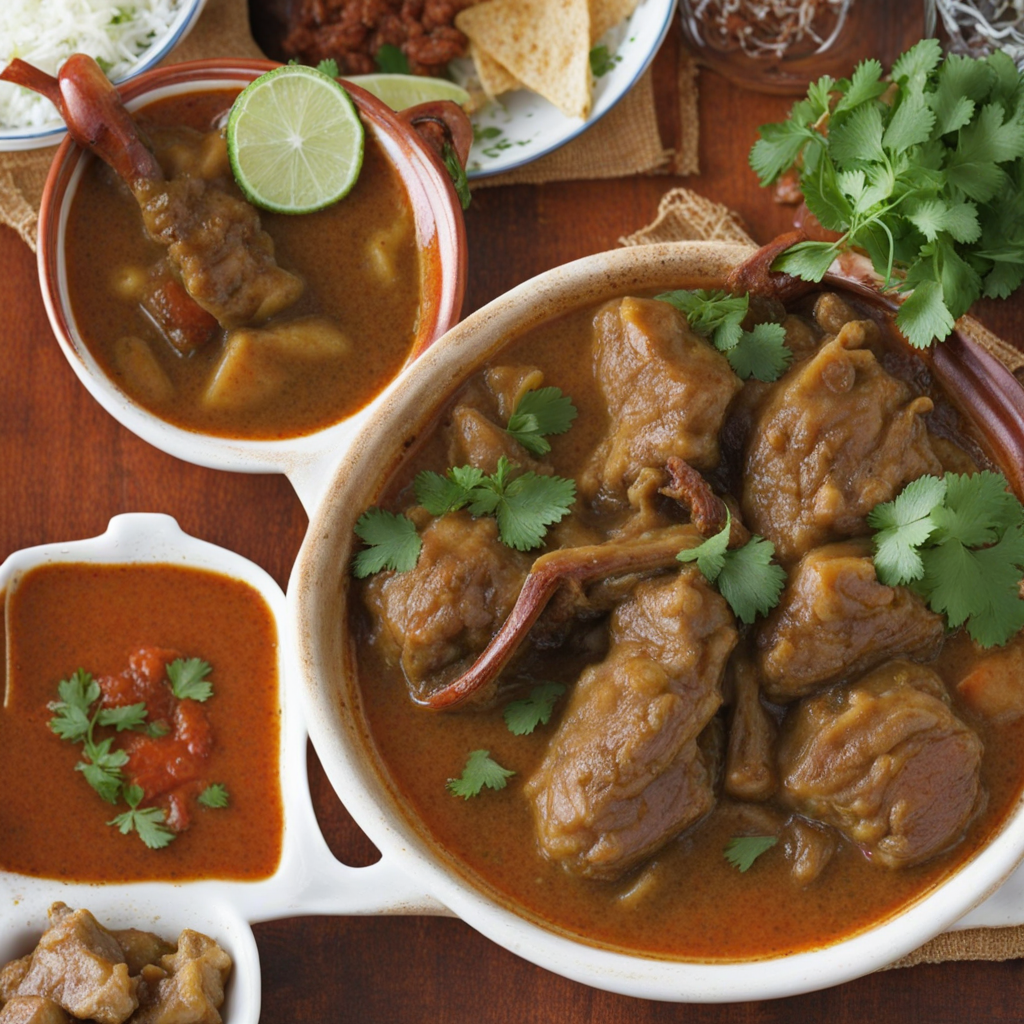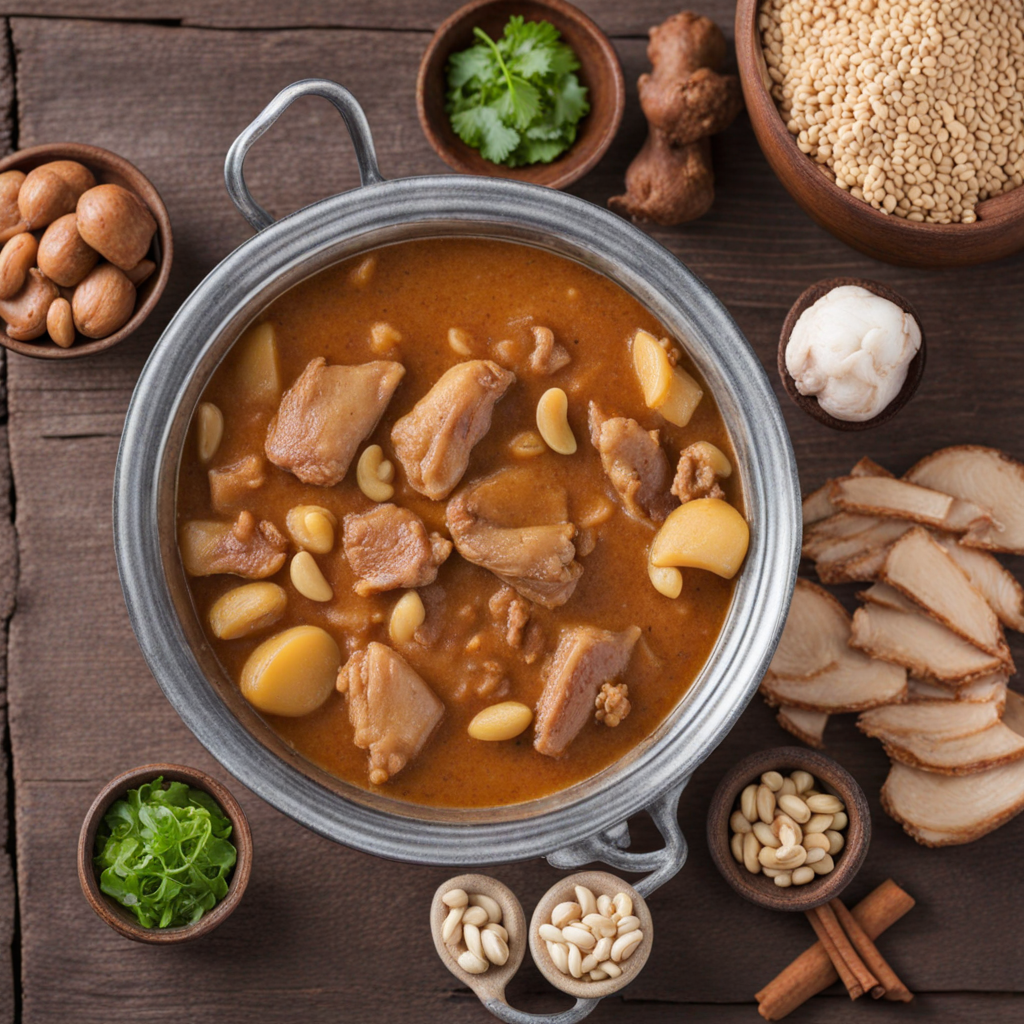Picarones
Picarones are a delightful Peruvian dessert that beautifully blend the textures of sweet potato and pumpkin into a unique, deep-fried treat. The dough is made from a combination of mashed sweet potatoes and pumpkin, which are mixed with flour, yeast, and spices such as cinnamon and anise. This mixture is then shaped into rings and fried until golden brown, resulting in a crispy exterior that encases a soft, fluffy interior. The aroma of the spices wafting through the air as they fry is simply irresistible, drawing in food lovers eager to experience this traditional delicacy. Once fried to perfection, picarones are typically drizzled with a luscious syrup known as chancaca, made from raw sugar, cinnamon, and cloves. This syrup adds a rich, caramel-like sweetness that complements the subtle flavors of the sweet potato and pumpkin. The combination of textures and flavors creates a harmonious experience on the palate, with the warm, chewy rings contrasting beautifully with the sticky syrup. Each bite is a celebration of Peruvian culture, reflecting the country's indigenous ingredients and culinary heritage. Enjoying picarones is not just about tasting a delicious dessert; it's an experience that evokes the warmth of Peruvian street food culture. Often served at local markets and during festive celebrations, picarones bring people together, inviting them to savor their sweetness while sharing stories and laughter. Whether enjoyed as a dessert or a snack, these delightful rings are sure to leave a lasting impression, making them a must-try for anyone looking to explore the vibrant flavors of Peru.
How It Became This Dish
Picarones: A Sweet Legacy of Peru Origins and Ingredients Picarones, a beloved Peruvian dessert, are often compared to doughnuts due to their fried, ring-shaped form. However, they are distinctly unique in both flavor and cultural significance. The origins of picarones can be traced back to the fusion of indigenous and Spanish culinary traditions during the colonial era in Peru. The primary ingredients of picarones include sweet potatoes and wheat flour, with the addition of anise, sugar, and sometimes pumpkin. This combination reflects the agricultural bounty of Peru, where sweet potatoes and pumpkins are native crops. The use of sweet potatoes, in particular, highlights the indigenous influence on Peruvian cuisine, as this root vegetable has been cultivated in the Andes for thousands of years. Cultural Significance Picarones hold a special place in Peruvian culture, not just as a popular street food, but also as a symbol of the country's rich culinary heritage. They are often enjoyed during festive occasions, particularly during the celebrations of the Day of the Dead (Día de los Muertos) and during Holy Week (Semana Santa). These moments of communal celebration amplify the importance of picarones in bringing people together, serving as a sweet indulgence that transcends social and economic barriers. The dessert is typically served with a syrup made from chancaca, a raw sugar derived from the sugarcane juice. This syrup is flavored with spices such as cinnamon and clove, creating a rich and aromatic topping that complements the subtle sweetness of the picarones. The preparation of this syrup is an art in itself, harkening back to the colonial period when sugar became a significant commodity in the region. Historical Development Historically, the development of picarones can be seen as a microcosm of Peru's broader culinary evolution. The introduction of Spanish ingredients and techniques during colonial times led to the creation of dishes that blended indigenous practices with European influences. The frying technique used for picarones is reminiscent of Spanish fritters, yet the core ingredients tell a different story. As Peru moved into the 19th and 20th centuries, picarones began to gain popularity beyond local communities. Street vendors would sell them in bustling markets and public squares, making them accessible to all. This democratization of food contributed to their status as a national delicacy. The mass production of picarones began to emerge, with families and small businesses creating their own recipes, each adding a personal touch that reflected local tastes and traditions. In the mid-20th century, picarones began to gain recognition outside of Peru. As Peruvian immigrants settled in other parts of the world, they brought their culinary traditions with them, introducing picarones to new audiences. This globalization of food paved the way for a greater appreciation of Peruvian cuisine, eventually leading to the international recognition of chefs who highlighted traditional dishes, including picarones, in their restaurants. Modern Variations and Trends Today, picarones continue to evolve while maintaining their traditional roots. In contemporary Peruvian cuisine, chefs are experimenting with various ingredients and flavors, leading to innovative twists on the classic recipe. Some variations include the addition of different types of flour, such as quinoa flour, to make the dessert gluten-free, or incorporating exotic flavors like orange zest or chocolate into the batter. The rise of food markets and festivals has also contributed to the resurgence of interest in picarones. Street food culture is thriving in urban areas, and picarones are often featured prominently in culinary events and fairs. Food trucks specializing in traditional Peruvian desserts have emerged, bringing picarones to diverse audiences and promoting them as a must-try delicacy. Moreover, the global interest in health and wellness has prompted some vendors to offer baked versions of picarones, catering to those who seek healthier alternatives without sacrificing flavor. This adaptability is a testament to the resilience of picarones as they navigate the changing tides of culinary preferences. Culinary Heritage and Preservation As globalization continues to influence food cultures around the world, there is an increasing awareness of the importance of preserving traditional culinary practices. In Peru, there are ongoing efforts to safeguard the recipes and techniques associated with picarones, ensuring that future generations can enjoy this delectable treat. Initiatives to promote local ingredients, support small-scale producers, and educate chefs about traditional cooking methods are crucial in maintaining the authenticity of picarones. Furthermore, the recognition of Peruvian cuisine on the global stage has sparked a renewed interest in traditional dishes, including picarones. Chefs from around the world are exploring the flavors of Peru, and picarones often make appearances in restaurants that celebrate South American cuisine. Through collaborations, pop-up events, and culinary exchanges, picarones are finding their way into the hearts and palates of people worldwide. Conclusion Picarones are more than just a dessert; they are a testament to Peru's rich history of cultural exchange and culinary innovation. From their indigenous roots to their adaptation in modern kitchens, picarones encapsulate the spirit of Peru's diverse culinary landscape. As this sweet delicacy continues to evolve and capture the imaginations of food lovers around the globe, it remains a cherished symbol of Peru's heritage—a reminder of the power of food to connect people across time and space. Whether enjoyed at a bustling street stall or at a fine dining restaurant, picarones will always carry the essence of Peru's vibrant culinary story.
You may like
Discover local flavors from Peru


